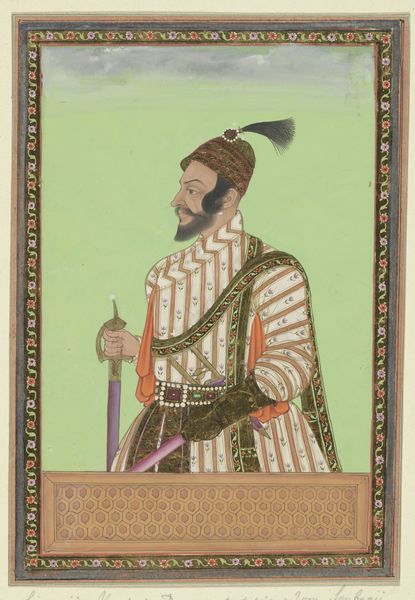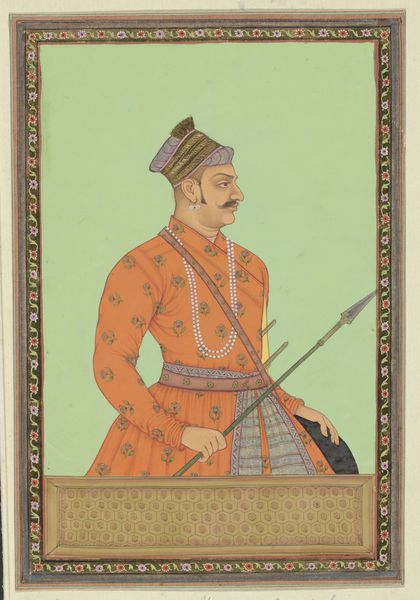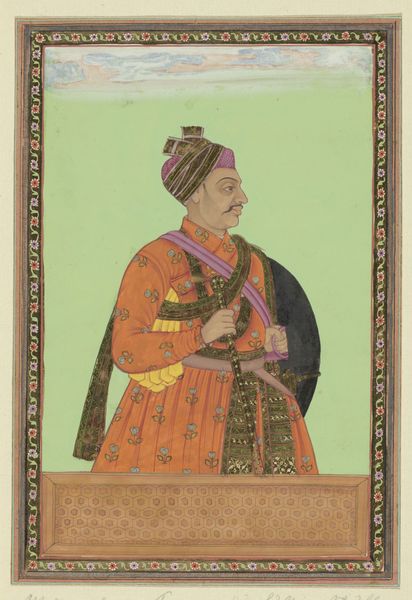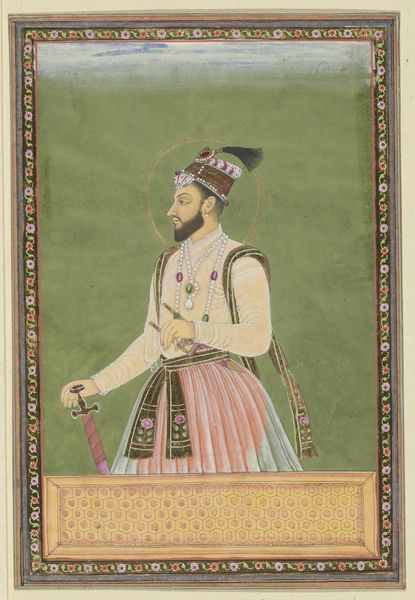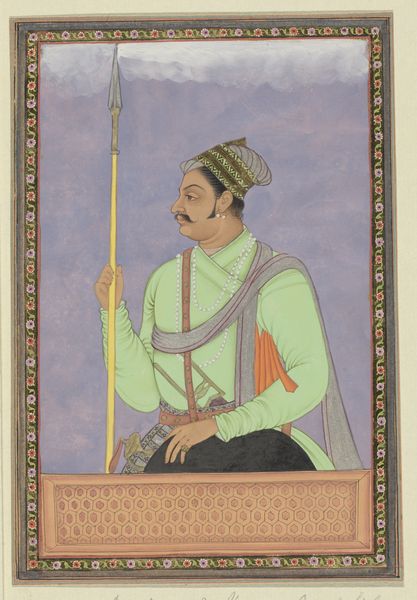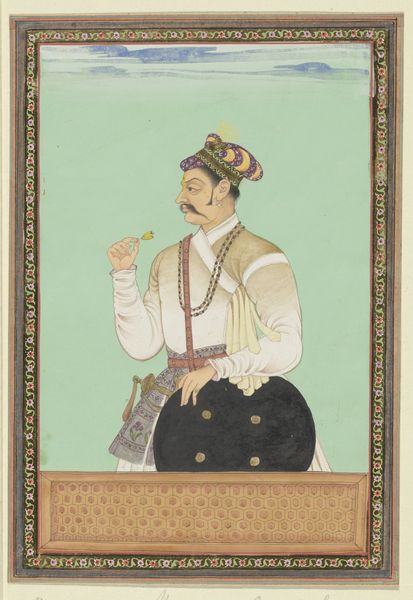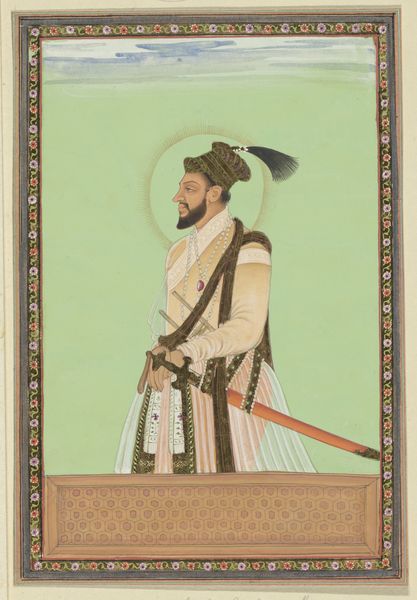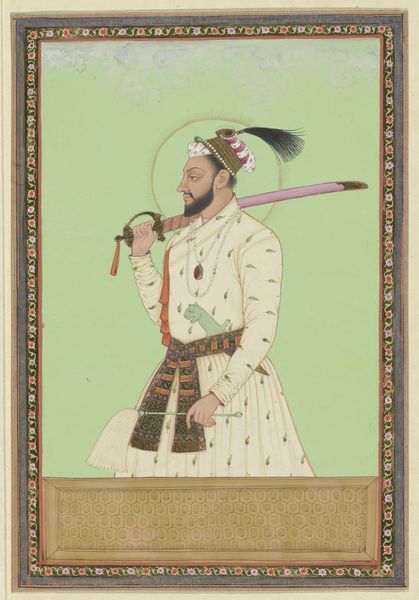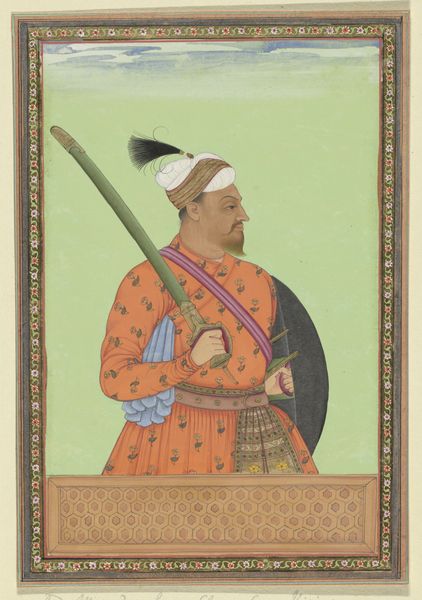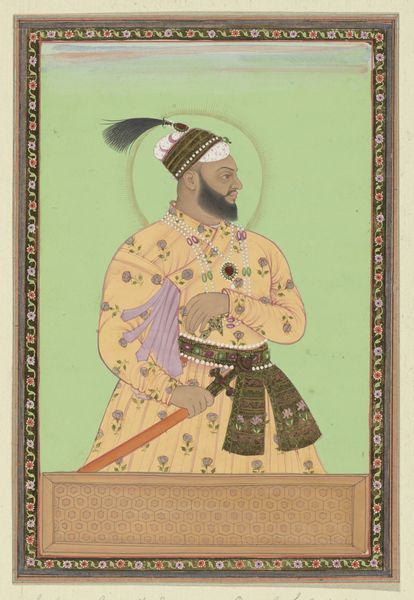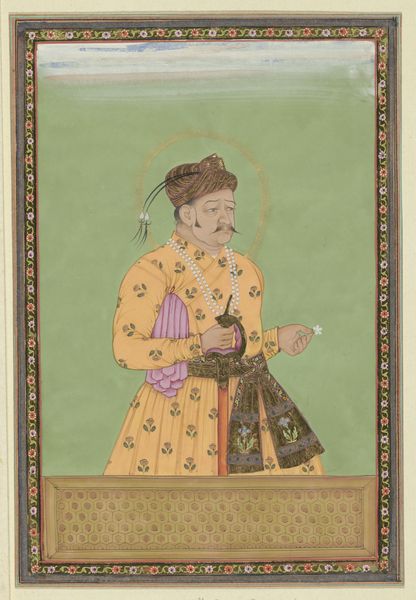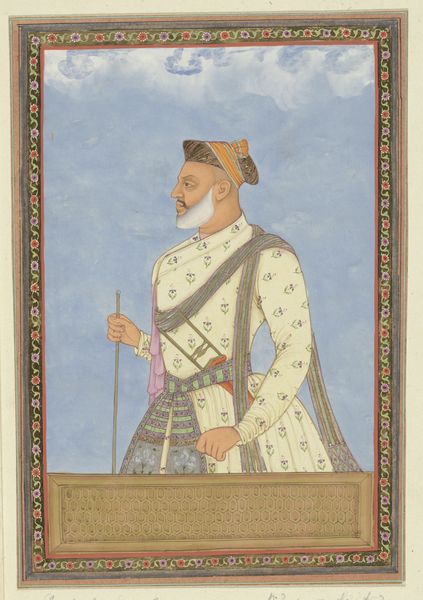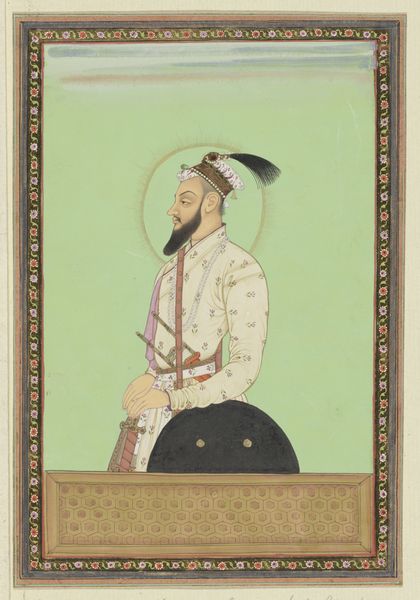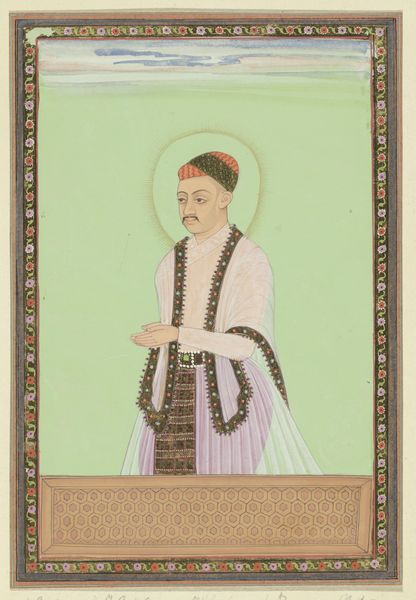
Portret van Jihangir Padshah, de zoon van Humayun, die na zijn vader regeerde in Hindustan c. 1686
0:00
0:00
painting, watercolor
#
portrait
#
water colours
#
painting
#
asian-art
#
caricature
#
watercolor
#
islamic-art
#
watercolour illustration
#
miniature
Dimensions: height 203 mm, width 140 mm
Copyright: Rijks Museum: Open Domain
Curator: This is a painting titled "Portret van Jihangir Padshah, de zoon van Humayun, die na zijn vader regeerde in Hindustan," an artwork thought to originate around 1686. It's currently housed in the Rijksmuseum. Editor: It strikes me with an immediate sense of regal containment. The flatness of the pale green background contrasted by the delicate patterning creates this effect. Curator: The halo surrounding his head signifies divine rule, a visual legacy borrowed from Christian iconography to legitimize power in Mughal paintings. What psychological weight does this image carry in light of such hybridity, suggesting an assimilation of foreign aesthetics? Editor: Let's talk about this flatness for a moment, because I think it connects to how this image was likely made. These Mughal miniatures are watercolours, after all. Think about the layering involved, the specific properties of the pigments sourced, and the brushes used—most likely made of fine squirrel hair to create such detail. Curator: Yes, precisely. Notice the jewels, which communicate not only status, but protection from harm and also denote a divine connection; what seems decorative is, in reality, potent. Editor: And yet, even the rendering of these jewels reveals the labor. It's meticulous, almost obsessive, right? Somebody really took their time here. And the use of watercolours—a less durable medium than oil, say—emphasizes this artwork's vulnerability. It requires specialized knowledge of the medium to achieve a product like this. Curator: It is a cultural object reflecting the artist's labor, sure, but consider this too: the slightly idealized, almost caricature-like rendering emphasizes the symbolism, the king is not quite grounded in the physical. Editor: I understand that argument, but I can’t help focusing on the frame around him! These repeated tiny blooms and leafy vines suggest the delicate labour to enclose and constrain—almost imprison—him. Curator: An astute point! The floral motifs act as a visual boundary, containing the divine ruler in earthly beauty and further illustrating that synthesis of cultures. Editor: Reflecting on the labor that shaped this delicate Mughal miniature is intriguing—it is much more complex once you consider the means of making. Curator: I'll take with me the artwork’s function of power made material—how this painting embodies cultural synthesis within dynastic power structures.
Comments
No comments
Be the first to comment and join the conversation on the ultimate creative platform.
